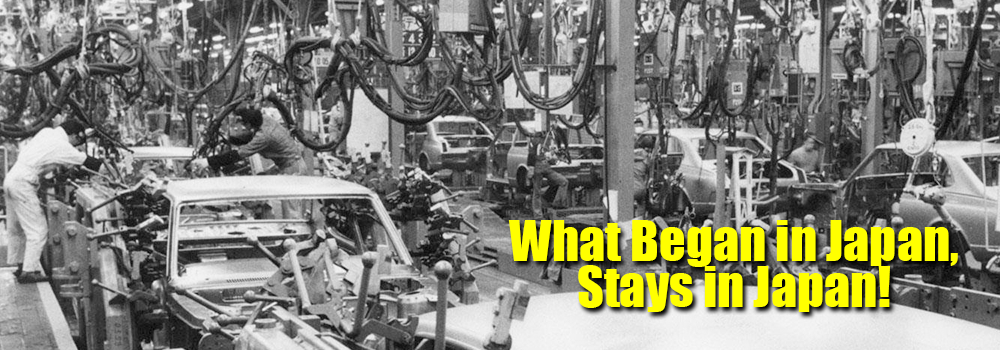
Abe and the Robot Revolution Initiative Council Have Developed a Five-Year Plan
“Abenomics” and the Robot Revolution
Prime Minister Shinzo Abe, fearing Japan’s robotics domination might be hotly challenged by China or Korea and also fearing as well for the productivity and social needs of his country, minced no words when calling for a “robot revolution.”
In May of 2015, at the opening of Japan’s Robot Revolution Initiative Council, Abe urged companies to speed the development of advanced robotics that “could help the country overcome the handicap of a fast-aging populace and a declining workforce and to help the country to use of robotics from large-scale factories to every corner of our economy and society.”
Abe fears that Japan’s advantage in robotics is eroding. “China has 530 robot companies, and its market share on the mainland grew from 4 per cent in 2012 to 13 per cent last year [2014], a worrisome trend for Japanese companies that have enjoyed solid profits there.” The Nikkei Asian Review predicts China’s share of robot sales will be 45 percent by 2020. A mere five years off!
That China has as many as 530-odd robot manufacturers is up for debate, says Shanghai-based Georg Stieler in his annual roundup Industrial Automation in China. Stieler’s research suggests that the real number for China’s robot manufacturers at about two dozen; the majority of companies mistakenly grouped as manufacturers are actually better termed as “integrators” of existing robot technology.
What’s at stake?
“Based on the preliminary results of the global statistics on industrial robots, the International Federation of Robotics (IFR), estimates that about 225,000 units were sold worldwide in 2014 [140,000 in Asia], 27 percent more than in 2013.”
China, the number one buyer, purchased 56,000 of those robots [40,000 from foreign-owned companies; 16,000 from indigenous Chinese manufacturers, up from 3,000 in 2013].
China’s near-term goal is to realize 50 percent sales originating from indigenous Chinese manufacturers. With China’s new Five-Year Plan (2016-2020) calling for vast increases in robot-driven automation and with 250,000 state-owned firms (SOF) as potential customers, a 50 percent saturation from Chinese robots is a very doable goal.
Wang Tianran, a robotics specialist with the Chinese Academy of Sciences, agrees that “China is catching up fast,” though quality remains an issue. “He thinks China will close the quality gap with Japan and South Korea by specializing in simple, smart, and flexible factory robots similar to Boston-based Rethink Robotics’ Sawyer, a small, mobile factory model.”
Although China may speed up production of these “flexible, factory robots” the overwhelming majority of product exiting Chinese factories is still the venerable industrial robot.
Unlike factory robots, “where Japan, Germany, and the US are dominant players, the intelligent service robot industry is still at a nascent state,” says Jeong Man Tae, a senior researcher at the Korea Institute for Industrial Economics & Trade.
Thus, Abe has a two-fold fear: 1. Loss of market share in industrial robots to China; 2. loss of the nascent smart, co-robot market to anyone.
Plan for the worst, hope for the best?
Japan’s position, as the Financial Times recently put it, is not rosy: “Japan suffers from an ageing population, persistent deflation and knotty structural problems in its labor market and energy supply. Its fiscal position is awe-inspiringly bad. Any country in this state would normally be advised to plan for the worst, and merely hope for the best.
“Abe’s program of monetary, fiscal and structural reforms,” concludes the Financial Times, “is still the medicine needed for jolting the economy out of its torpor.”
Heartening to the cause of robots in Japan is an estimate from theBoston Consulting Group: “Japan’s robots could help cut 25 percent from its factory labor costs by 2025. Further, Japan’s foray into service robots could make the industry pervasive—extending to the medical care, infrastructure, and retail sectors.”
The two-fold challenge is still doable if there’s a plan that’s executed swiftly and thoroughly.
Japan still possess the financial cloutto take on the robot challenge. “Japan’s decades of exporting prowess have bequeathed it foreign reserves larger than those of Germany, the US and UK combined…Abenomics is only a risk if it fails. Planning for its success is still the right approach.”
Abe and the Robot Revolution Initiative Council have developed a five-year plan to boost traction for Japan with intelligent machines in manufacturing, supply chains, construction, and health care. Backed by 200 companies and universities, the plan will try to retain market share for industrial robotics while expanding robotics sales from $4.9 billion annually to $19.8 billion by 2020.
For the time being, “Japan has a built-in edge over its rivals, starting with a deep and sophisticated domestic robotics industry,” says Hal Sirkin, a senior partner and managing director at Boston Consulting. In factory robotics, “they can pretty much easily produce what they need.”
But the reality of Japan’s future is clear: Yoshiko Yurugi, a robotics expert at the New Energy and Industrial Technology Development Organization: “We are entering an era when we will definitely have to rely on the help of robots.”
